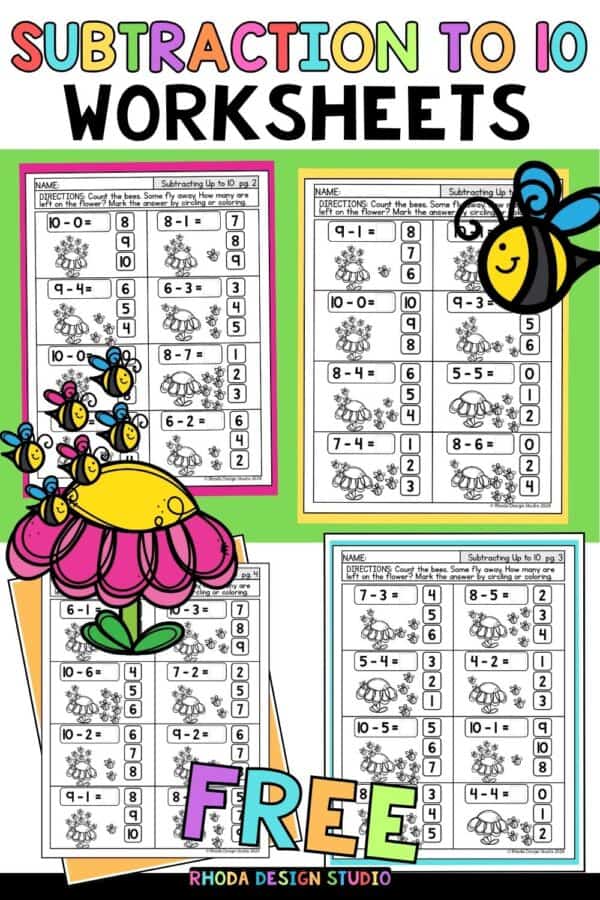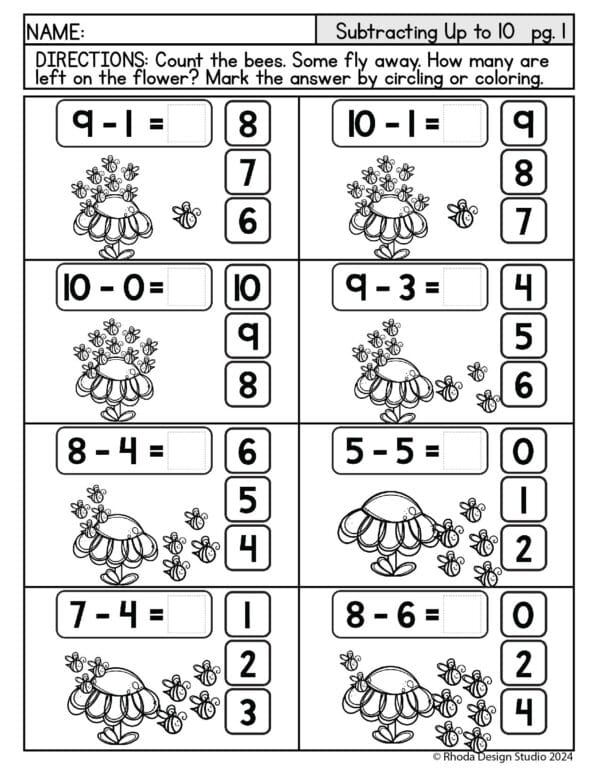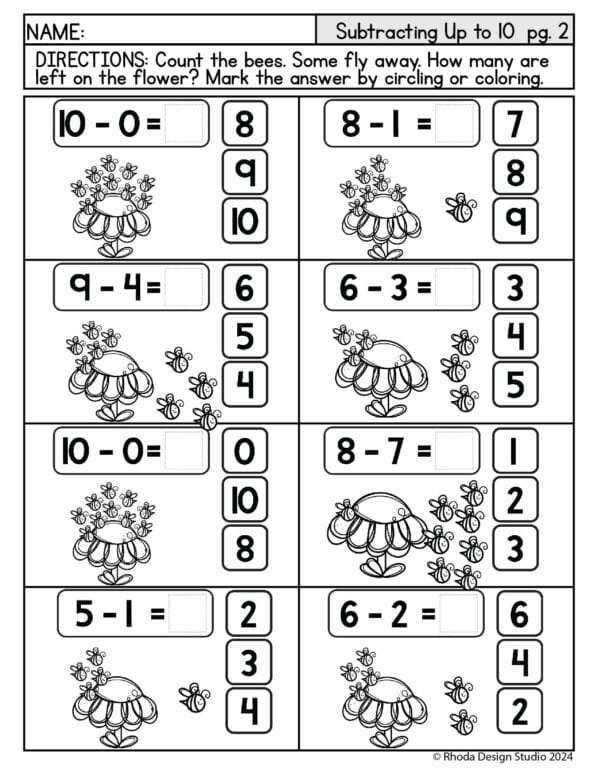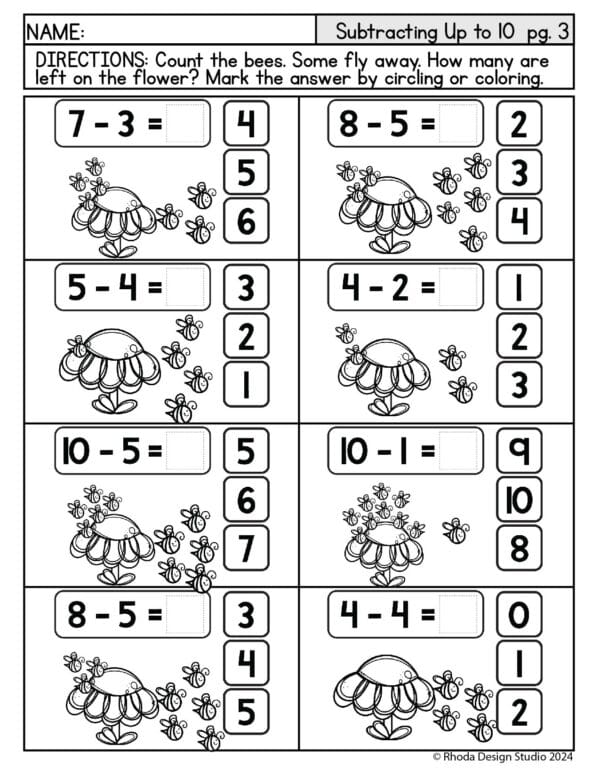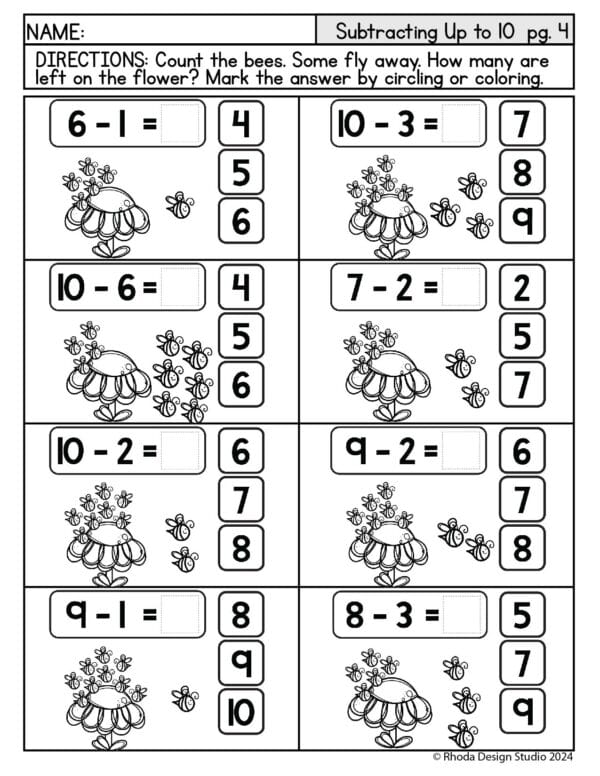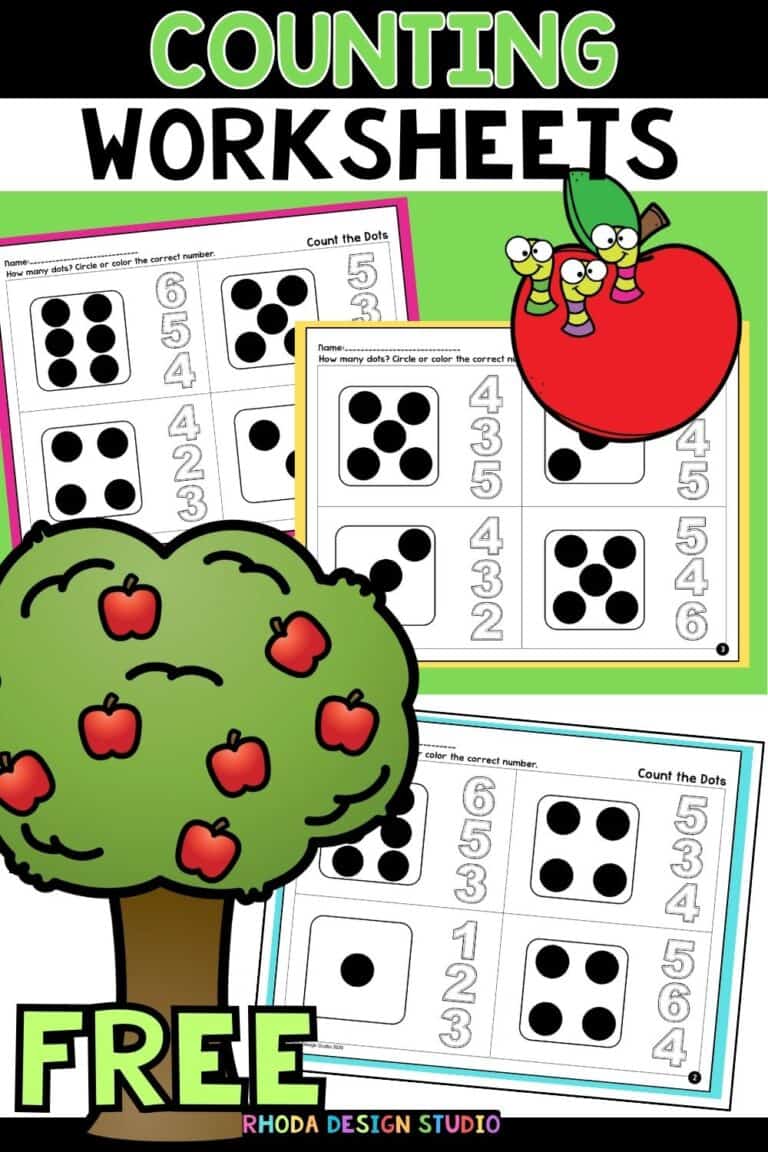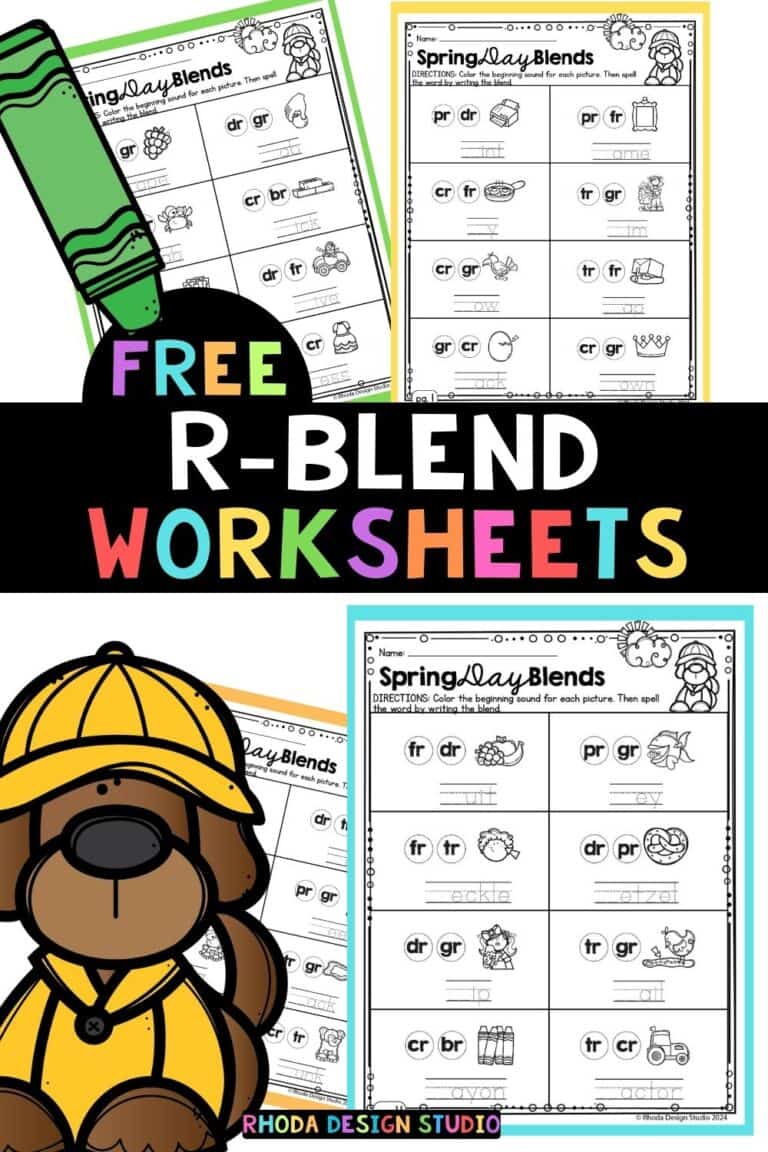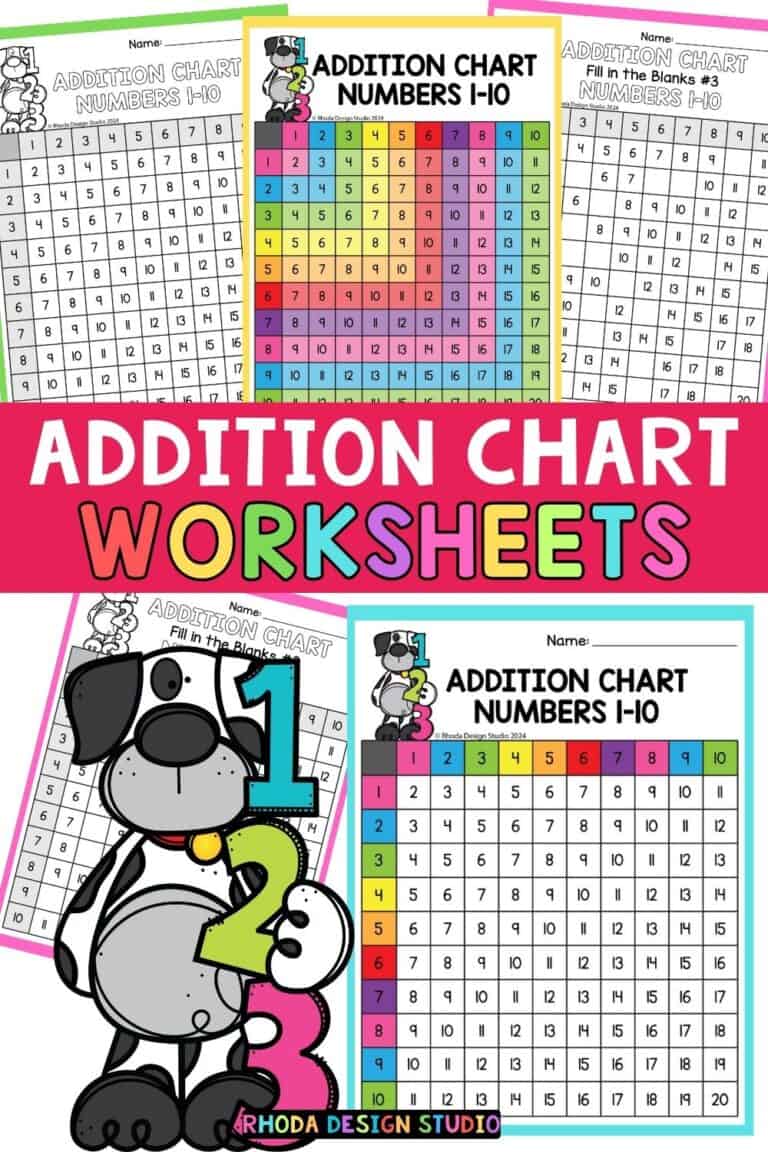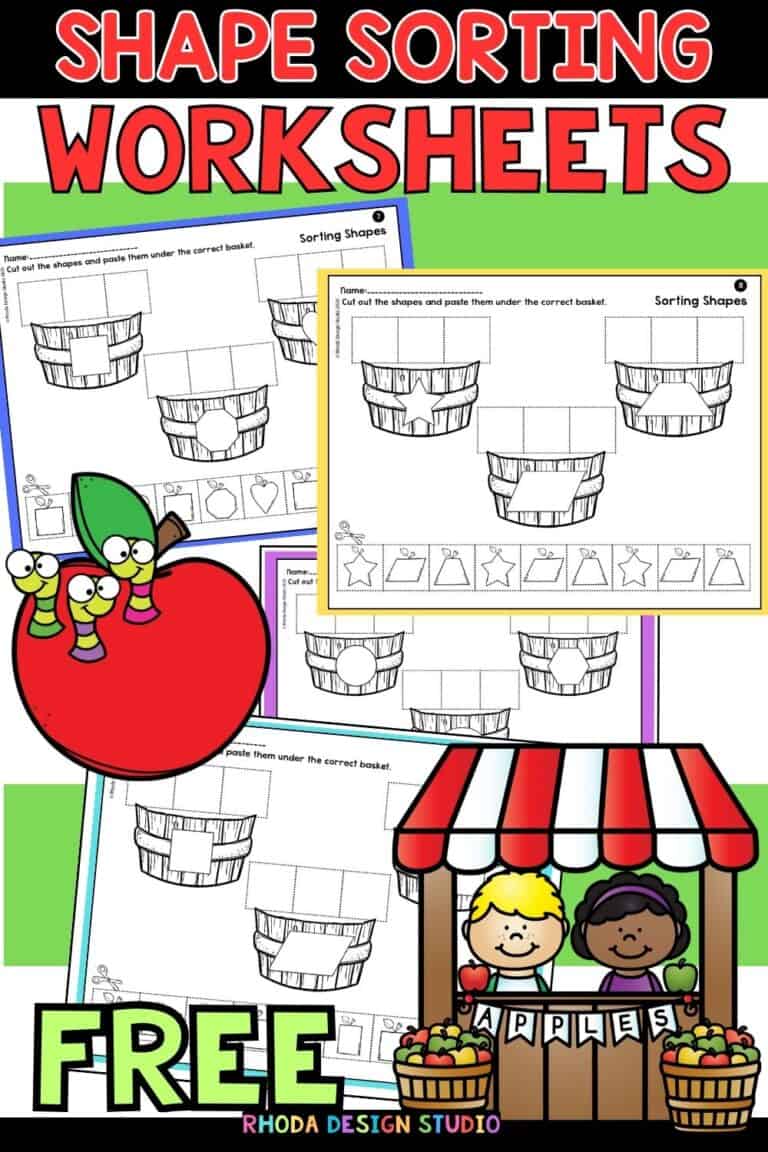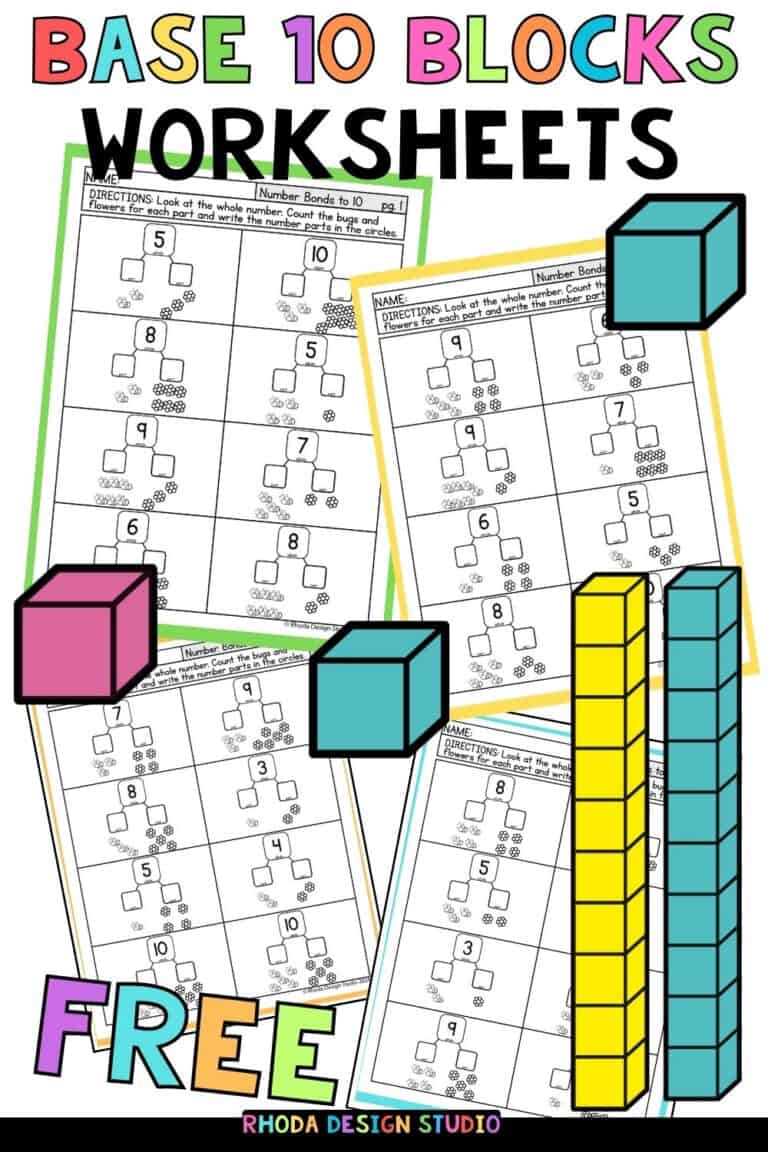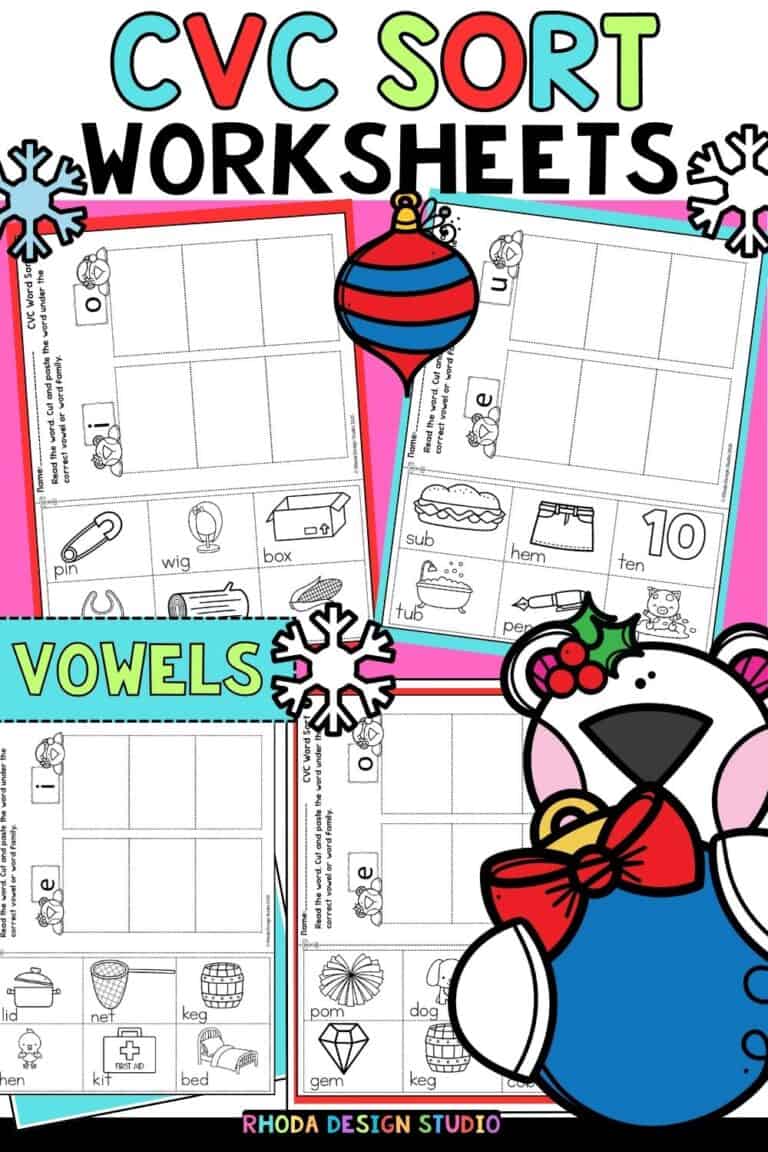Subtraction within 10: Free Worksheets for Teachers and Homeschool Parents
In the realm of arithmetic, subtraction is often the younger sibling overshadowed by its more popular relative, addition. But subtraction forms the backbone of advanced mathematical concepts and critical thinking skills.
This post is a guide for educators and homeschool parents looking to reinforce foundational subtraction skills for numbers up to 10 in primary learners. The focus here is not just on providing exercises but on enriching the learning experience with actions and interactions that foster a deeper understanding of fundamental math principles.
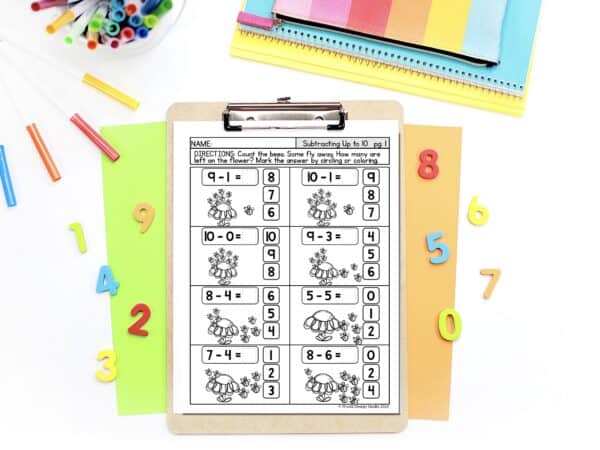
The Importance of Early Subtraction Fluency
Understanding subtraction is critical in developing number sense and lays the groundwork for a child’s mathematical aptitude. Mastery over subtraction within 10 helps students:
- Build fluency in basic math which is key to enjoying and appreciating the subject.
- Develop number relationships and patterns leading to better problem-solving skills.
- Acquire a strong mathematical foundation for future learning.
Engaging Activities for Subtraction Fluency
Teaching subtraction to young learners should be a dynamic process, blending visual aids, hands-on activities, and interactive exercises to sustain interest and enhance comprehension.
Visual Aids and Counting Tools
Utilize concrete materials like blocks or counters, or digital counting tools on interactive whiteboards and tablets to provide a tangible representation of taking away. When students can physically group and then remove items, the abstraction of numbers into subtraction problems becomes much clearer.
Interactive Games
Board games, online interactive problems, or simple flashcard activities can turn a regular math lesson into fun exploration. Make it a competition, create a lively atmosphere, and watch as the subtraction facts stick with the students.
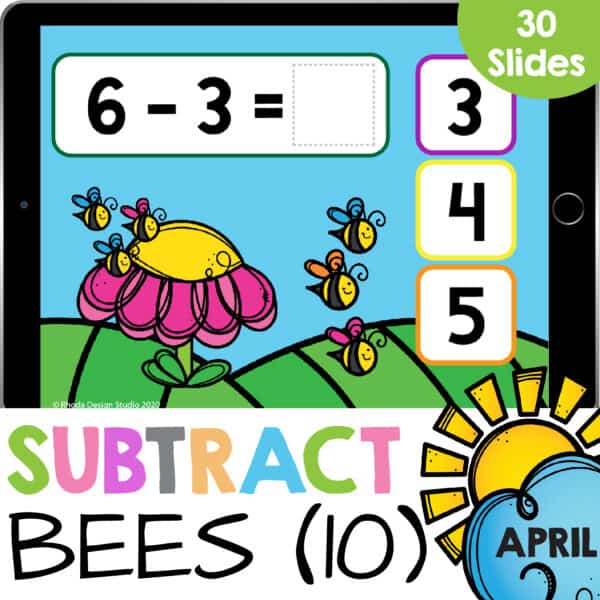
You can get interactive lessons for Google Slides or Boom in my shop.
Real-World Scenarios
Provide subtraction problems that reflect real-world scenarios. For example, ask children to think about the concept of ‘less than’ in terms of snacks left in a lunchbox or toys on a shelf.
Personalized and Differentiated Instruction
Each child’s learning curve is unique. Differentiate by varying the complexity of subtraction problems or adjusting the number of problems based on your students’ needs. Use formative assessment data to inform this process and ensure that every student is challenged at an appropriate level.
The Role of Language in Subtraction
Verbal and written language are integral to understanding subtraction. Ensure that the language being used in instruction and activities is clear and consistent. Avoid jargon and use terms that are simple and relatable to daily life.
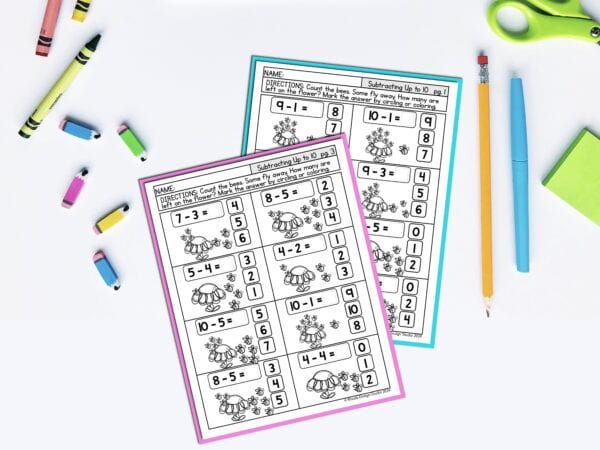
No-Prep Worksheets and Exercises
Basic Subtraction Sentences
Provide timed or untimed exercises where students write the answers to simple subtraction sentences. Ensure the equations address just one concept, such as the subtraction of one number from another with a single-digit answer.
Word Problems
Introduce word problems into the mix, helping students understand how subtraction applies to real life. Start with straightforward scenarios and gradually increase the complexity, making sure to guide students in translating the words into number sentences.
Coloring and Craft Activities
Give each student a picture to color based on the correct answers to a series of subtraction problems. This not only reinforces the math but also allows for a creative outlet.
NOTE: Click each image to download the page or click the download button for the full set.
Encouraging Growth Mindset in Math
Building a growth mindset allows students to see challenges as opportunities for growth. Praise the process and effort they put into learning subtraction, and use mistakes as learning experiences rather than failures.
Incorporating Technology
In many cases, technology can be harnessed to make learning more interactive and engaging. Apps, educational websites, and online games can provide students with a variety of subtraction-focused activities that cater to different learning styles.
Assessing Subtraction Fluency
To gauge how well subtraction concepts have been absorbed, use a mix of formal and informal assessments. Observe in-class activities, conduct one-on-one assessments, and deploy periodic quizzes to monitor progress.
Mastering Subtraction
Mastering subtraction within 10 is a critical milestone in a child’s mathematical development. By incorporating a range of activities, providing personalized instruction, and fostering a positive mindset towards math, teachers and parents can help students build a solid foundation for future mathematical understanding.
